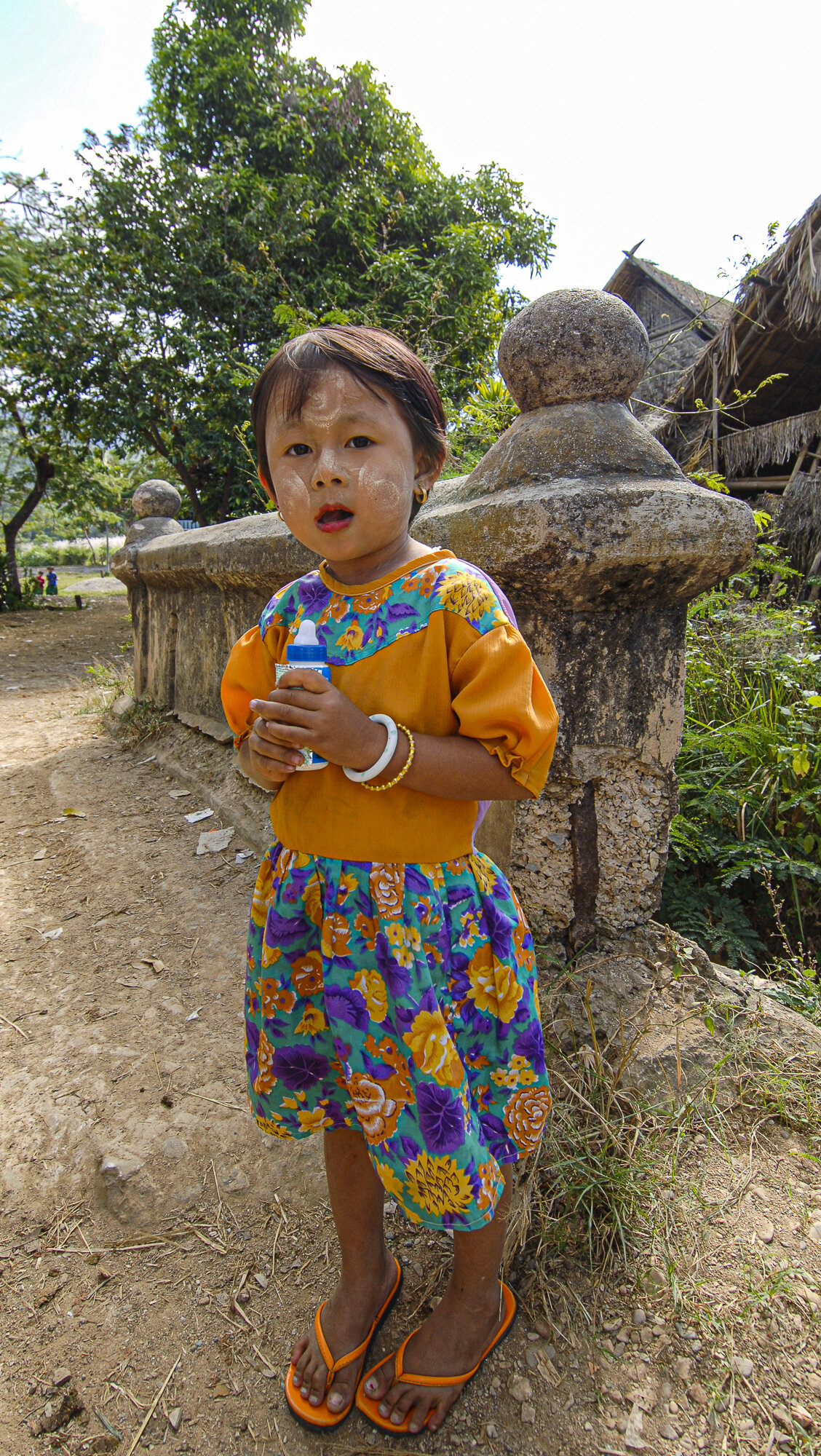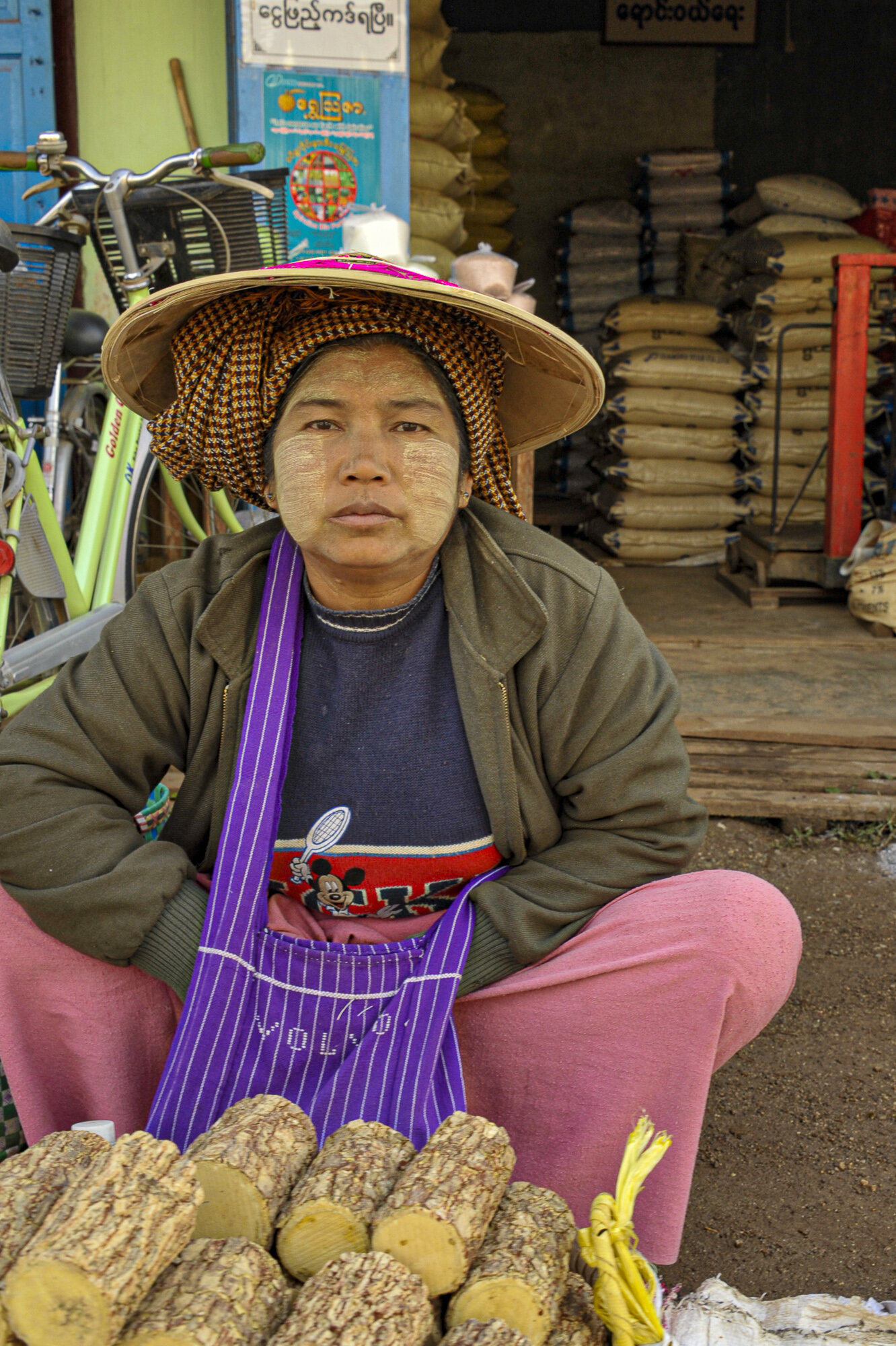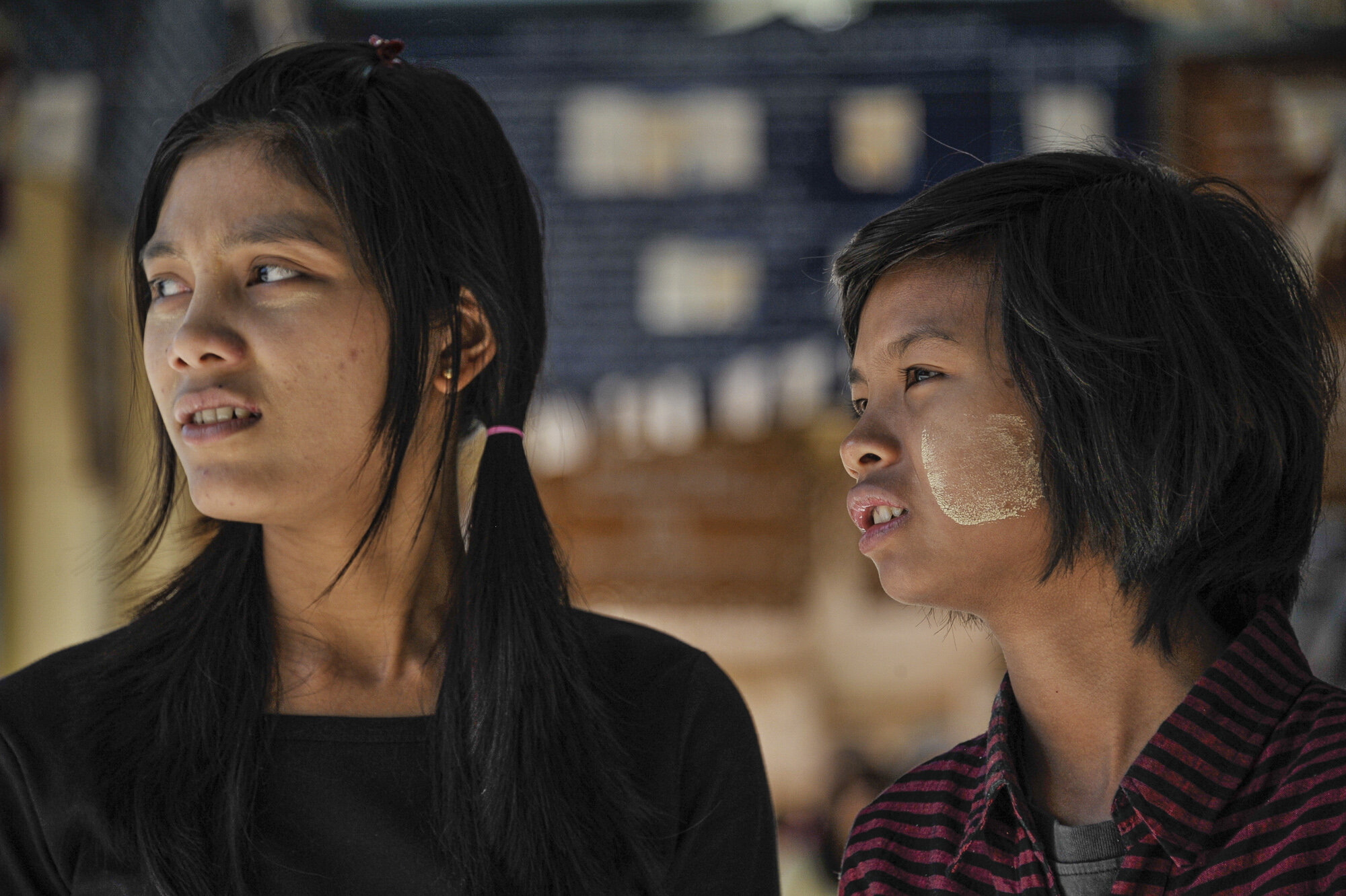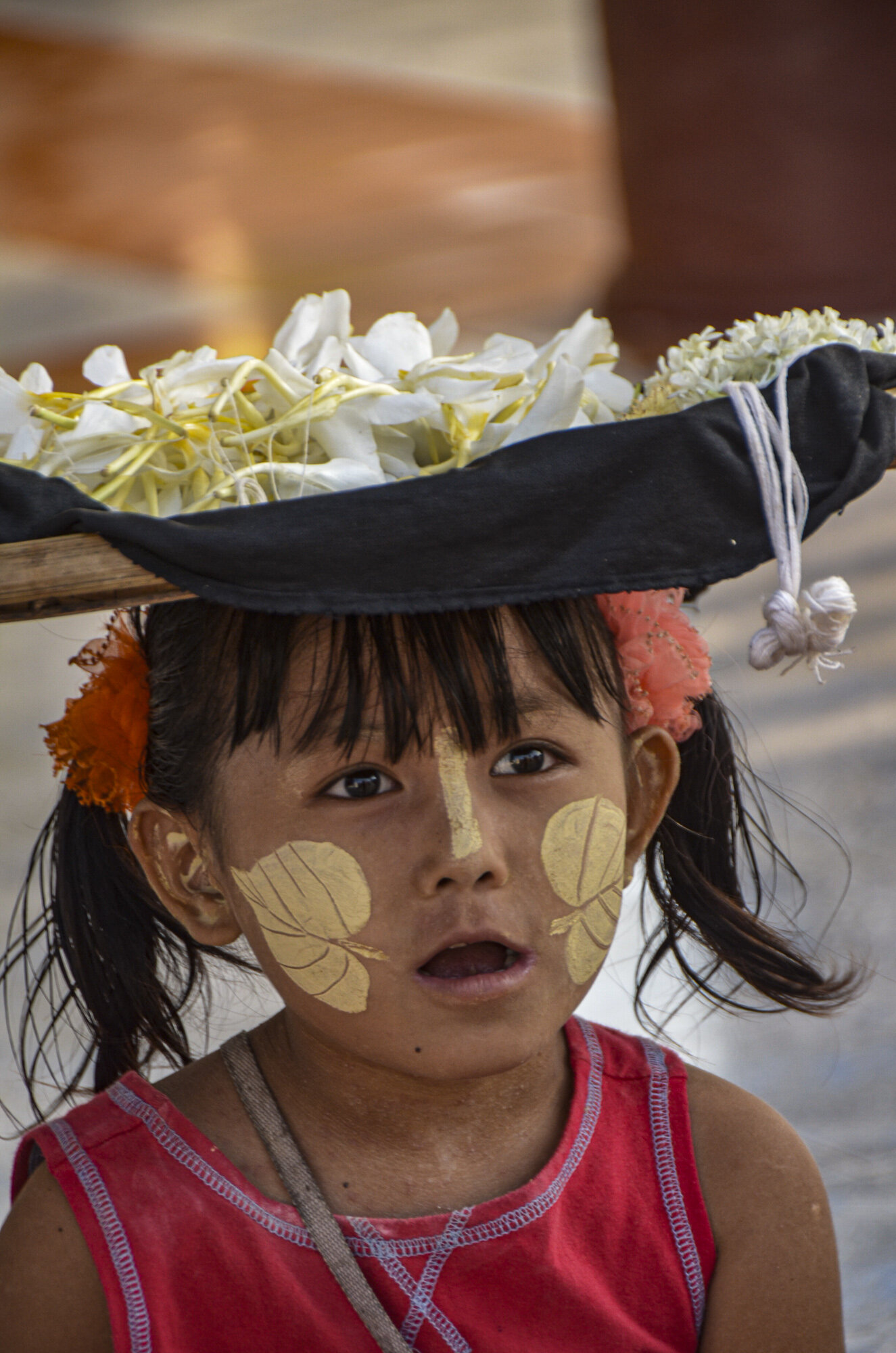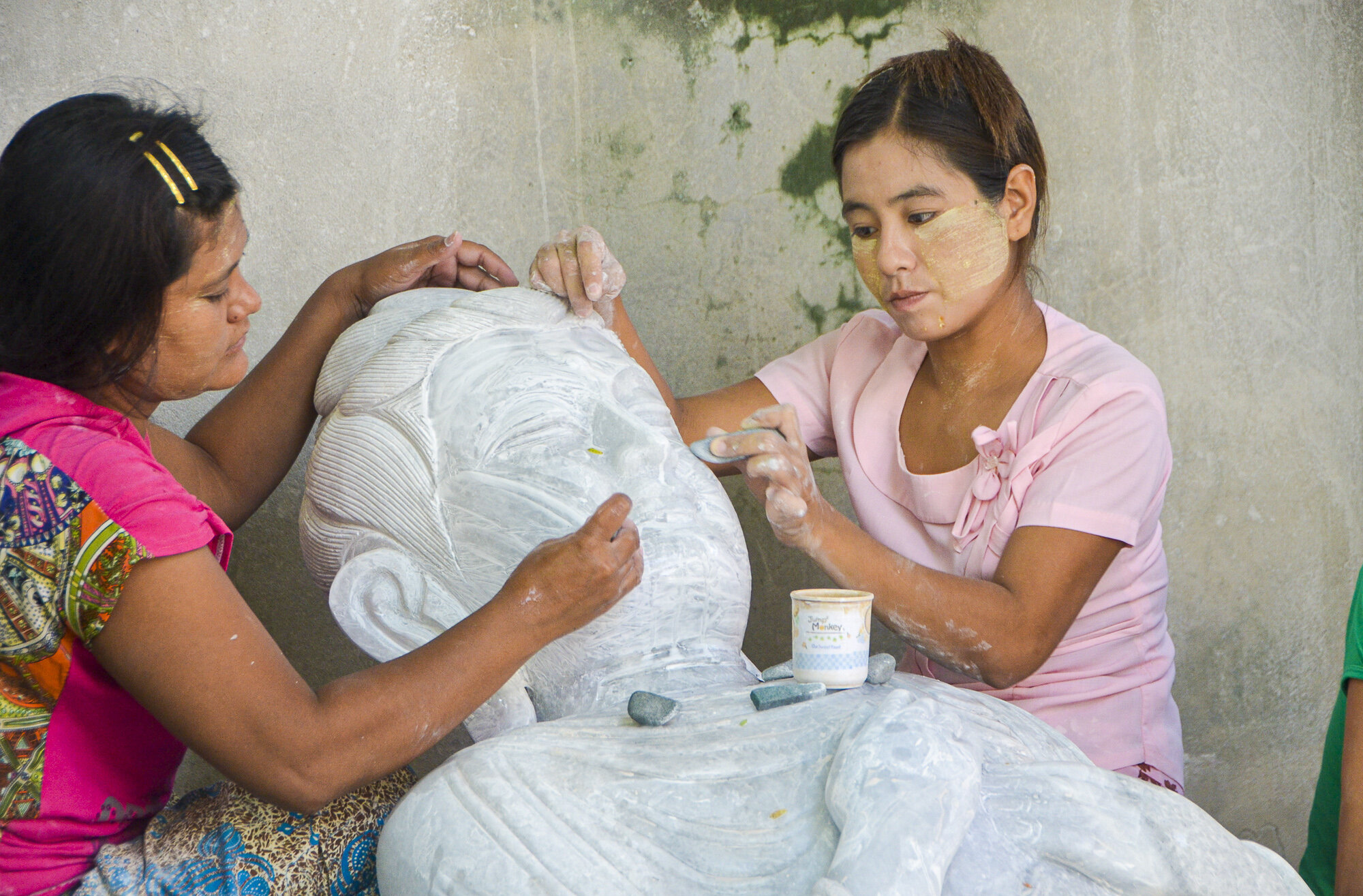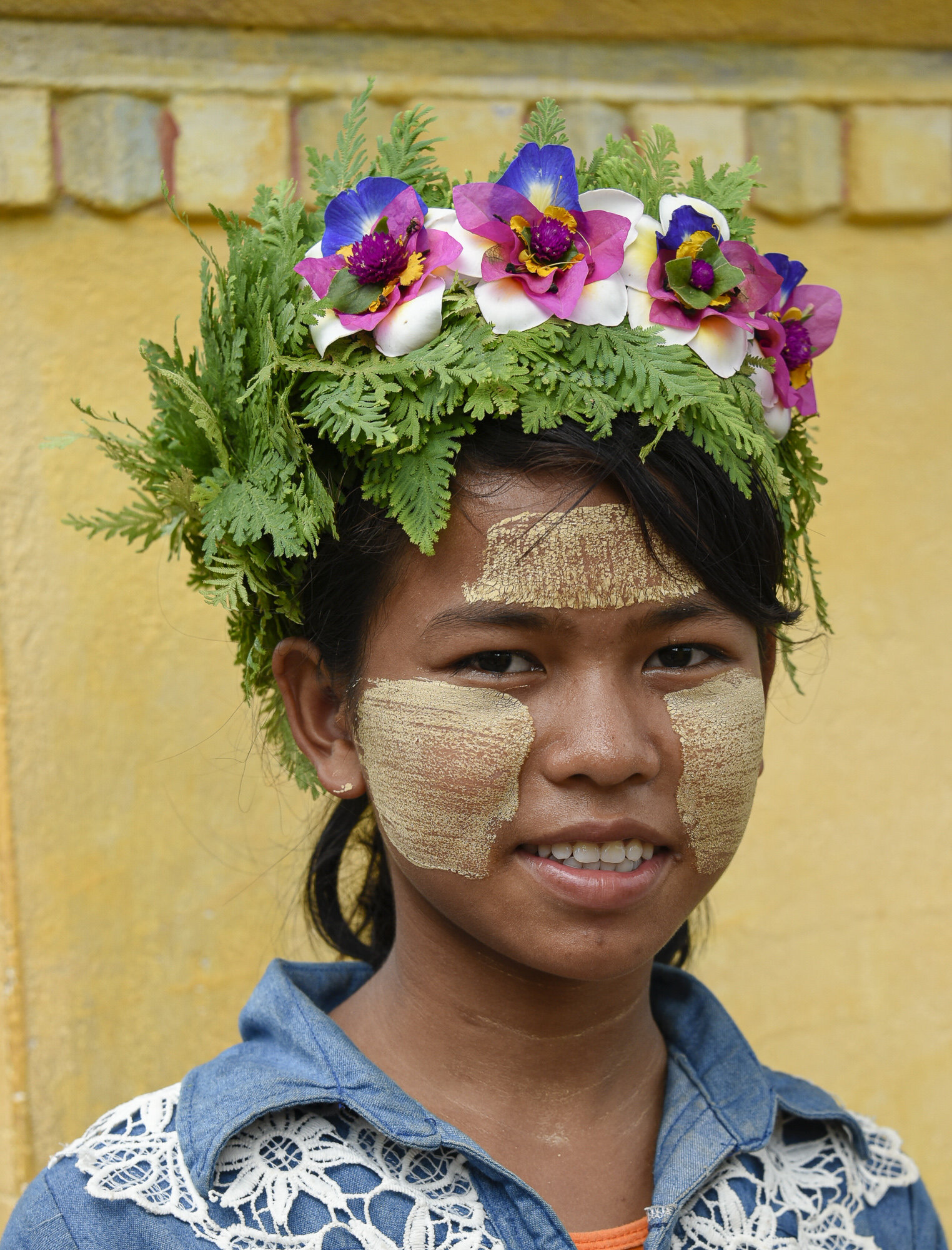MYANMAR SUN BLOCK
Young Myanmar farm workers wearing thanaka.
Walk anywhere in Myanmar, especially in the countryside and you will see something different on women and children faces. I was on my second day in country, in the dry region of Bagan in 2000 and I could not help but notice that many has these light yellow/whitish tattoos on their faces….some round, some square, some with stripes…Asking my local guide, he laughed and replied “Those are not tattoo Mister Denis, this is like paste and comes from wood, this is best to protect from sun…”
Over the course of my trips guiding and researching across this gorgeous country, I came across many faces, young and old, covered in this magical paste called Thanaka. The cream is produced by grinding the bark of a thanaka tree, using a circular slate slab. Many of my local and national guides actually travel with their own grinding stone and a small section of tree and they would whip out both from their pack sacks when they felt they would need a fresh layer on their face. Thanaka cream has been used by Burmese men, women, and children ( especially women as make-up ) for over 2,000 years. It has a fragrant scent somewhat similar to sandalwood. The creamy yellow paste is applied to the face, sometimes just slapped on quickly, other times in attractive designs, the most common form being a circular patch on each cheek, nose, sometimes made stripey with the fingers. Our national guide, Cho Cho had a whole tool kit with toothbrushes, picks and combs that would make amazing patterns. Apart from cosmetic beauty, thanaka also gives a cooling sensation and provides protection from sunburn. Locals swear it also helped remove acne and give a smooth skin.
Farmers believe the best thanaka comes from wild trees, especially those planted by birds who eat the fruit. Cultivated trees seem to have a lower strength. You will see many thanaka stalls in open markets, the trees branches are sawed off is small 6-8 inches long sections. All you need to do is scrape the thin layer of bark on your grinding stone. The final result looks like dry corn flour. Once mixed with water, it becomes very light and diluted and you apply directly on your face. After 20-30 minutes, you end up with a thin golden crust on your face. I must admit I rarely saw men wearing thanaka, it does seem like a fashion/beauty treatment.
While looking through my photo library for photos of thanaka pasted faces, I realized how I miss going to guide in Myanmar. Like most calamities now these days, the political nightmare and violent demonstrations against the military have now faded off the world news and once again Myanmar people are left alone to fend on their own. Of all the South East Asian countries I have guided and explored, Myanmar remains the most unique and stunning in my mind.
Myanmar women and children leaving a local market near Mandalay.
LITTLE KNOWN FACT:
Thanaka trees must grow for at least 35 years before they’re considered old enough to produce quality cuttings, as the trees grow slowly and can take 10 years for the trunks to reach just two inches in diameter. Once the trees have grown large enough, they’re cut, and thanaka paste is then ground from the bark or roots.
BEST MONTH TO VISIT:
Between November to February, when the temperatures are easier to handle. From April onwards, heat becomes extreme in this area of Myanmar before the rains of July-August start.
Longitude 80 will offer a private Myanmar expedition including a private 2 night cruise and a 3 night coastal retreat in one of the country’s most isolated areas in the future. Due to the political situation in Myanmar, we have decided to postpone any itineraries until we feel it is safe to travel.




